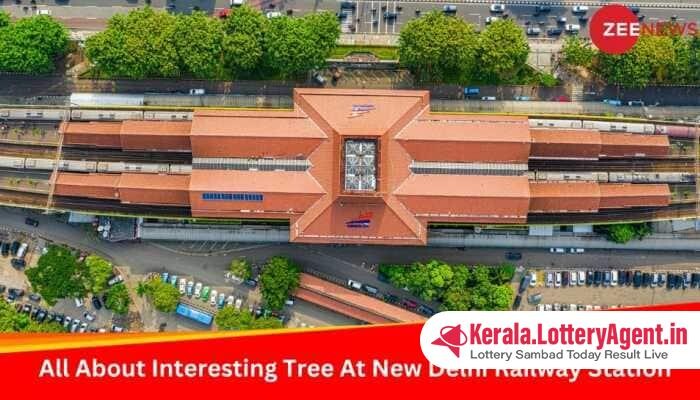
The Indian Railways, an arterial network that propels the nation, has recently been in the spotlight not just for its transportation services but for its progressive overhaul of railway stations across the country. Taking on an aesthetic and futuristic approach, the railways have started infusing art installations and vibrant greenery into their stations, transforming them into visual spectacles.
The latest innovation capturing public interest at New Delhi Railway Station, however, is somewhat unorthodox and splendid—an exotic tree valued at a staggering Rs 25 lakh. Far from being just another decorative addition, this Thai-imported botanical treasure has generated buzz for its majestic presence and significant worth.
Positioned strategically at platform number one towards Tilak Bridge, this tree cannot escape the admiration of curious passengers at one of India’s busiest railway stations. According to News18 reports, this tree is not only a representation of global aesthetic aspirations but is also turning heads for its high maintenance regime. It is said to require one litre of protein every month, costing around Rs 2,500, along with additional expenditures, totaling approximately Rs 5,000 for fertilizers and water.
What sets this foliage apart is its unique capacity to be shaped into an elaborate lattice structure as it matures over time, becoming an enchanting visual feature at the station. This attribute captures the artistic allure Indian Railways seeks to project in its architectural vision.
Shedding light on the broader scheme of Indian Railways, it has set an ambitious agenda to refurbish over a thousand stations nationwide, including the iconic New Delhi Railway Station. The goal is bold—to elevate these hubs to meet international standards of passenger service and station design. The revamp isn’t limited to passenger areas alone; even the VIP zones designated for Members of Parliament and Union Ministers are being graced with touches of green, visually aligning with the broader transformation initiative.
New Delhi Railway Station itself is at the heart of this revolution. On any given day, it sees upwards of 350 trains gliding across its rails, ferrying legions of travelers to countless destinations. Housing prestigious services such as the high-speed Vande Bharat and the luxurious Rajdhani trains, the station stands as a testament to India’s robust and diverse travel and transportation demands, promising unfaltering connectivity.
The tree’s intricate, lattice-like form that unfurls as it grows not only adds a layer of charm to its locale but also narrates the story of the Indian Railways’ dedication to combining functionality with beauty. In aligning with international standards, New Delhi Railway Station seamlessly blends the practical with the picturesque, ensuring that passengers’ journeys are not only efficient but also visually pleasing.
Amidst the constant whirl of activity, the presence of this tree at New Delhi Railway Station signifies more than just an embellishment. It stands as a symbol of Indian Railways’ commitment to transformation and innovation—melding natural beauty with urban infrastructure.
The broader implications of such installations go beyond aesthetics. They are about reimagining public spaces, enhancing passenger experiences, and demonstrating a commitment to sustainable and environmentally conscious development. This single tree, with its substantial maintenance requirements and the spectacle it represents, channels the essence of the Indian Railways’ journey towards modernity and global prominence.
The railway administration’s ambitious station overhaul plan denotes a stride towards not just enhancing the traveler’s journey but also redefining the cultural landscape of the spaces we transit through. This amalgamation of natural elements and contemporary design is steering Indian Railways towards a tomorrow where travel is interlaced with art, comfort, and sustainability, marking a new era in the history of India’s railway stations.












